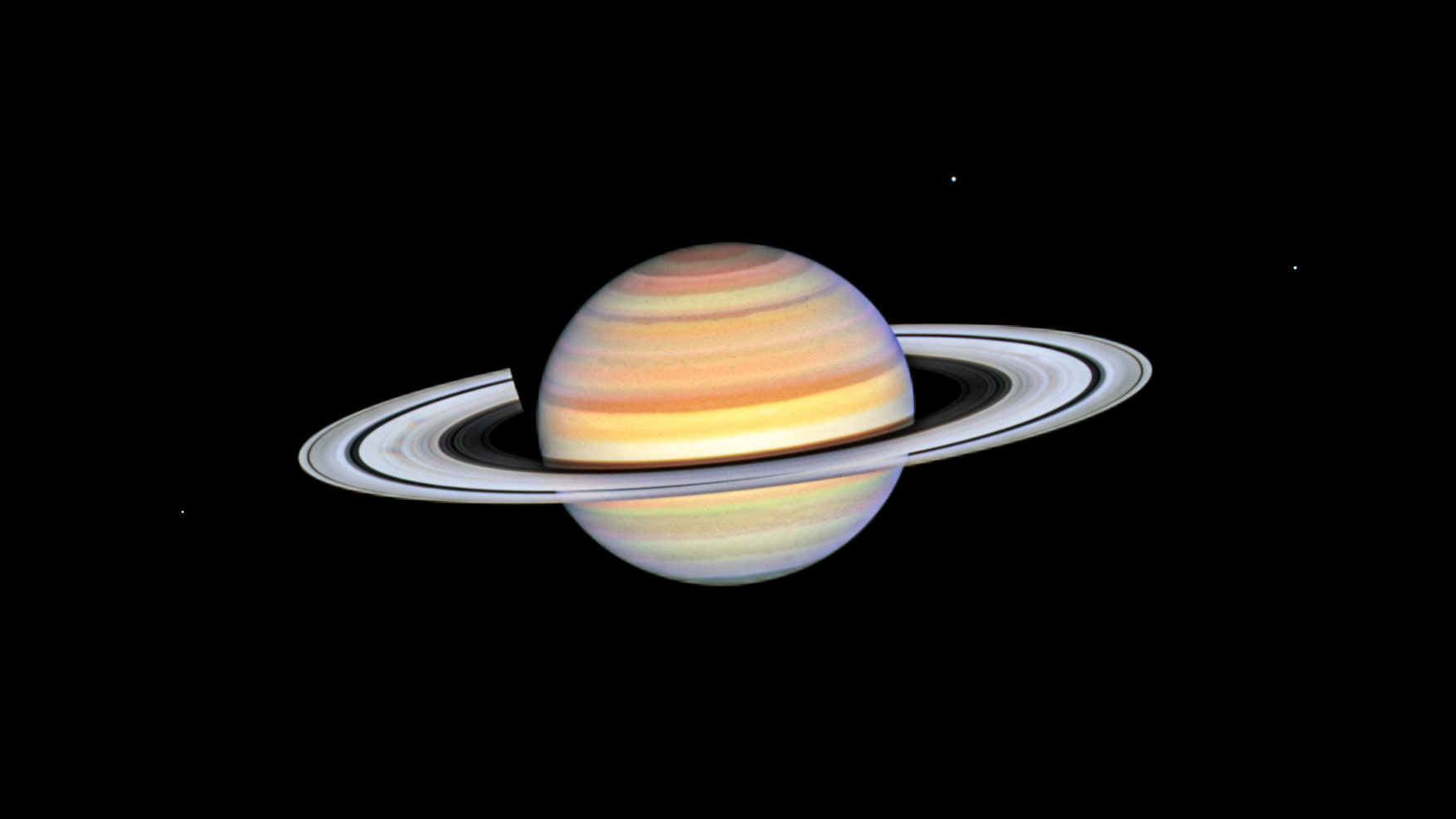5 min read
Cassini Significant Events 05/30/07 - 06/05/07
June 7, 2007
(Source: Cassini Project)
The most recent spacecraft telemetry was acquired on Tuesday, June 5, from the Madrid
tracking complex. The Cassini spacecraft is in an excellent state of health and all
subsystems are operating normally. Information on the present position and speed of the Cassini spacecraft may be found on the "Present Position" web page located at http://saturn.jpl.nasa.gov/operations/present-position.cfm.
Wednesday, May 30 (DOY 150):
Science this week is dominated by apoapsis observations. The Magnetospheric and Plasma
Science instrument teams will be performing Saturn magnetospheric studies, the Visual and
Infrared Mapping Spectrometer (VIMS) will lead a rings mosaic observation with the
Ultraviolet Imaging Spectrograph and Composite Infrared Spectrometer taking part, and the
Imaging Science Subsystem continues a series of several observations of the smaller
satellites.
Thursday, May 31 (DOY 151):
Orbit Trim Maneuver (OTM) 113 was performed today. This is the cleanup maneuver from the
Titan 31 encounter on May 28. The main engine burn began at 7:00 PM PST. Telemetry
immediately after the maneuver showed the burn duration was 4.3 seconds, giving a delta-V
of 0.69 m/s. With the slower "hydrazine efficient" yaw turn rates, 50.3g of hydrazine
were used. All subsystems reported nominal performance after the maneuver.
An electronic postcard, or e-postcard, using the VIMS image "Neon Saturn", was issued
today. Flying over the unlit side of Saturn's rings, the image displays Saturn's glow,
represented in brilliant shades of electric blue, sapphire and mint green, while the
planet's shadow casts a wide net on the rings. To view the image and display the full
text of the caption, link to:
/resources/13625
Friday, June 1 (DOY 152):
The European Space Agency put out six news releases today. The full text of each release is
maintained on the Cassini Website and may be accessed from:
http://saturn.jpl.nasa.gov/news/features/index.cfm
The subjects and descriptions of the releases are listed below:
Building Our New View of Titan
Today, two and a half years after the historic landing of ESA's Huygens probe on Titan, a
new set of results on Saturn's largest moon is ready to be presented. Titan, as seen
through the eyes of Huygens, still holds exciting surprises, scientists say.
Revealing Titan's Rugged Surface
During its two and a half hour descent, the cameras on Huygens showed eager scientists on
Earth spectacular regions of bright highlands with river drainages and canyons, bounded
by dark plains on Titan. New information about the composition of the landing region is
now ready for the public.
Titan's Mysterious Radio Wave
Huygens scored a first in 2005 by measuring the electrical conductivity of Titan's
atmosphere. The results hint at a new way to investigate the subsurface layers of Titan
and could provide insight into whether or not Titan has a subsurface ocean.
Dissecting the Dirt on Titan
Planetary scientists are a step closer to understanding the composition of the dust in
Titan's atmosphere. A decade-long program of laboratory studies, aiming to reproduce
Titan's unique dust, or 'aerosol' population in specially constructed reactors, has
proved invaluable.
Huygens' Path to Titan
Scientists now know exactly how Huygens made its way through the atmosphere to the surface of Titan. The
reconstruction of the trajectory is particularly valuable for a correct interpretation of
the observations from all six scientific investigations on board.
The Way the Wind Blows on Titan
A simulation of the winds encountered by Huygens has led planetary scientists to believe
that its entire atmosphere is circulating around on a conveyor belt. This huge system of
moving gas transports warm air from the southern hemisphere to Titan's north pole and
back again.
Monday, June 4 (DOY 155):
The S34 kick-off meeting for the Science Operations Plan Update process was held today.
The S34 time period, September 22 to October 31, 2007, has been divided into four
sequences: S34A which will contain nominal spacecraft and science operations, a window
with no science in it carved out for the uplink and test of new flight software CDS Version 10,
a mini-sequence to observe Hyperion that will execute if the flight software check-out
completes in time, and S34B, back to nominal spacecraft and science operations. Each of
the three science pieces of S34 will be developed in parallel as complete, independent
sequences.
Tuesday, June 5 (DOY 156):
The final process for the development of the S33 sequence kicked off today. Merged
Subsequence Generation products based on the second merge from the Science Operations
Plan Update phase and stripped sequence files have been released to the team for review.
An encounter strategy meeting was held today to cover the period between June 13 and June
29, Titan flybys T32 and T33, and maneuvers 116-118.
Orbit Trim Maneuver (OTM) #114 was performed today. This is the apoapsis maneuver
setting up for the Titan 32 encounter on June 13. The main engine burn began at 11:14 AM
PDT. Telemetry immediately after the maneuver showed the burn duration was 75.6 seconds,
giving a delta-V of 12.22 m/s. OTM-114 was the largest burn in the last 19 months. The
last time the flight team performed a maneuver in the double digits was OTM-41, on
October 31, 2005, at 12.4 m/sec. The team is continuing to use the slower "hydrazine
efficient" yaw turn rates. Hydrazine consumption for this maneuver was 56.7 g. All
subsystems reported nominal performance after the maneuver.
Cassini Outreach will be showing Saturn to members of the general public at the Grand
Canyon National Park Star Party North Rim on June 12 and 13, and at the Bryce Canyon
National Park on June 14-16. These annual events are sponsored by the National Parks with
assistance from dozens of amateur astronomer volunteers. If you're traveling to these
great western US national parks, drop in for free viewing of Saturn, and many other
objects. Grand Canyon Star Party both North and South Rim dates are June 9 - 16, Bryce
Canyon Astronomy Festival is June 13 - 16.







